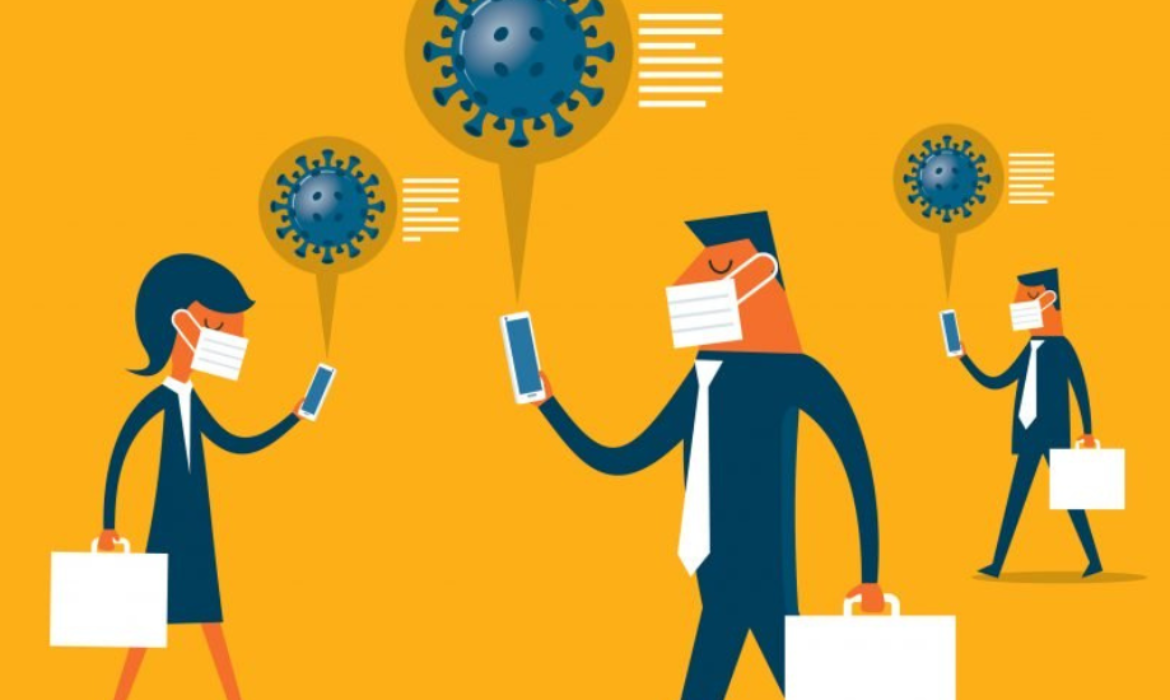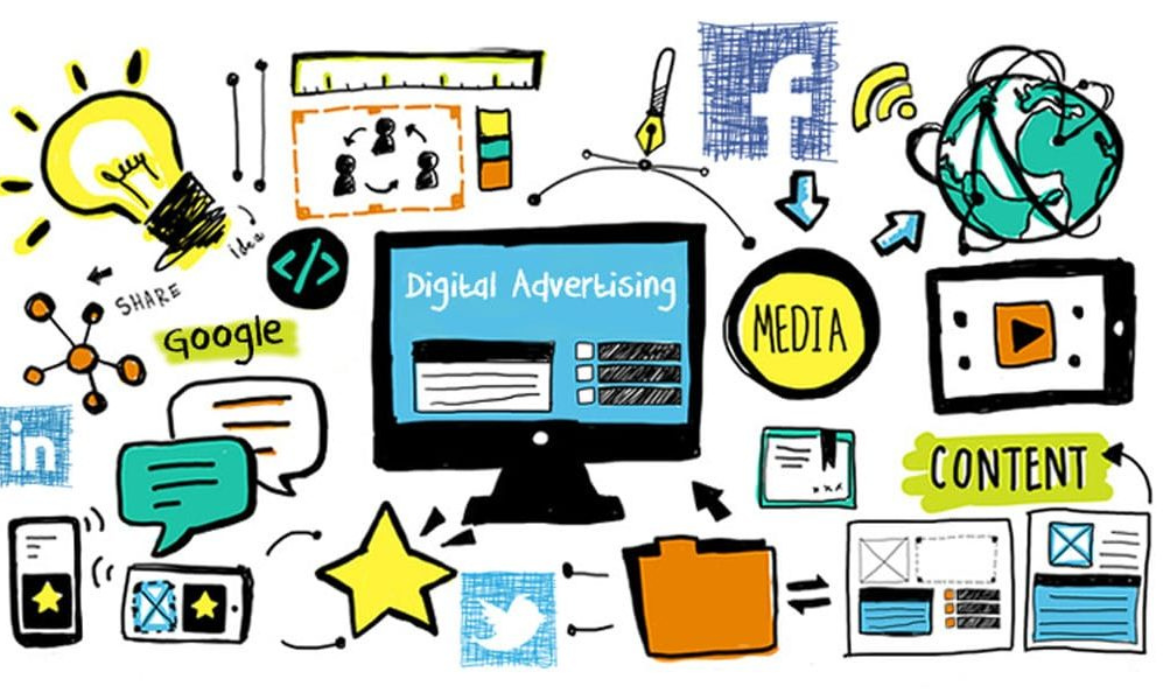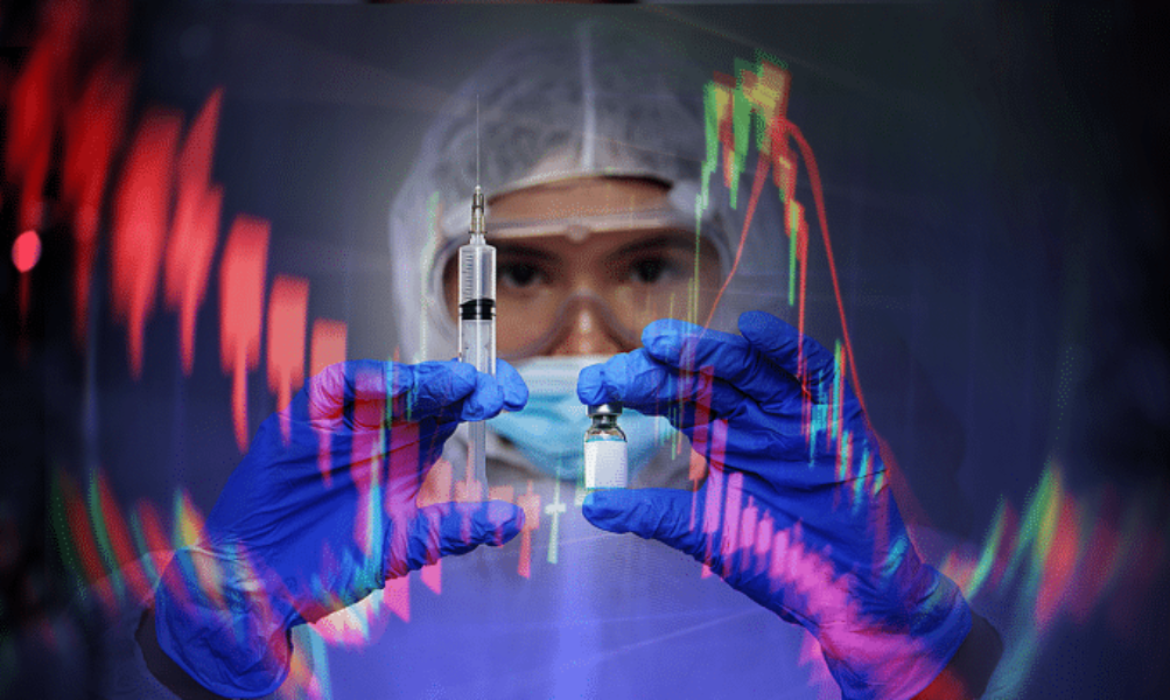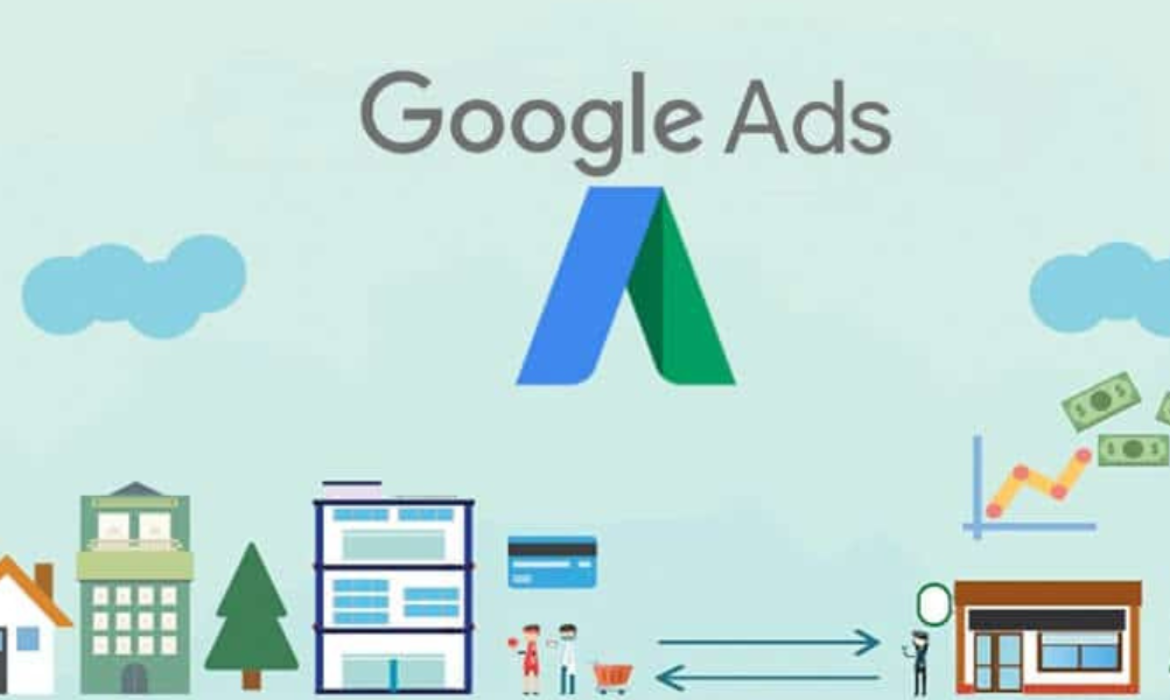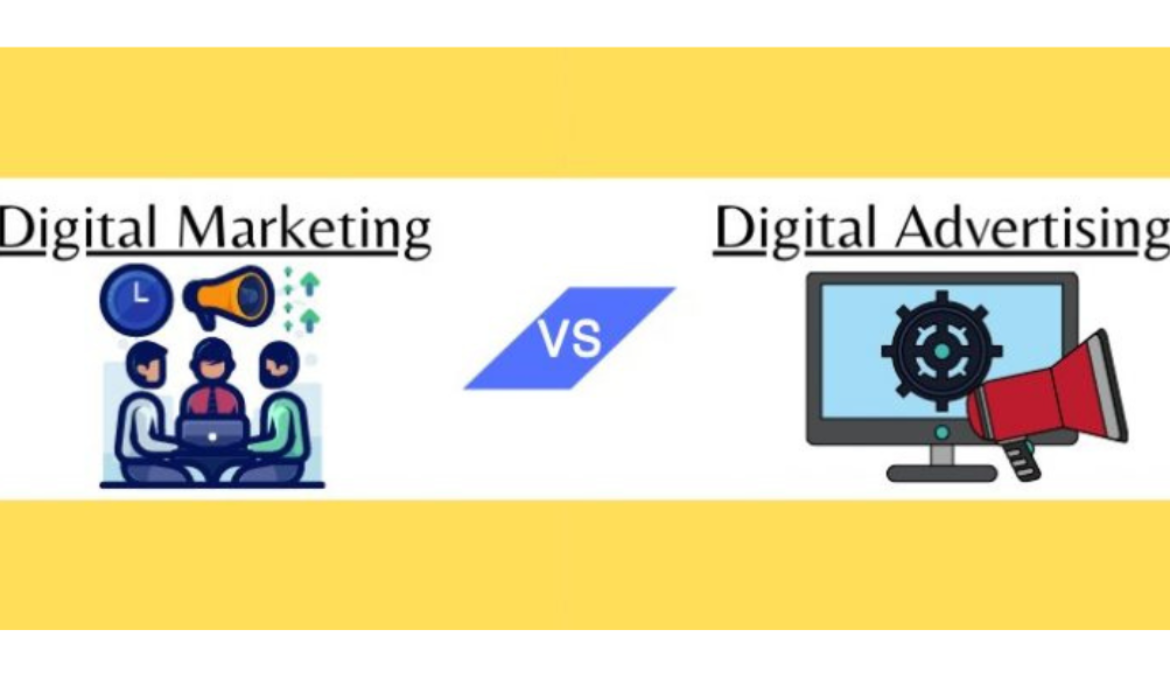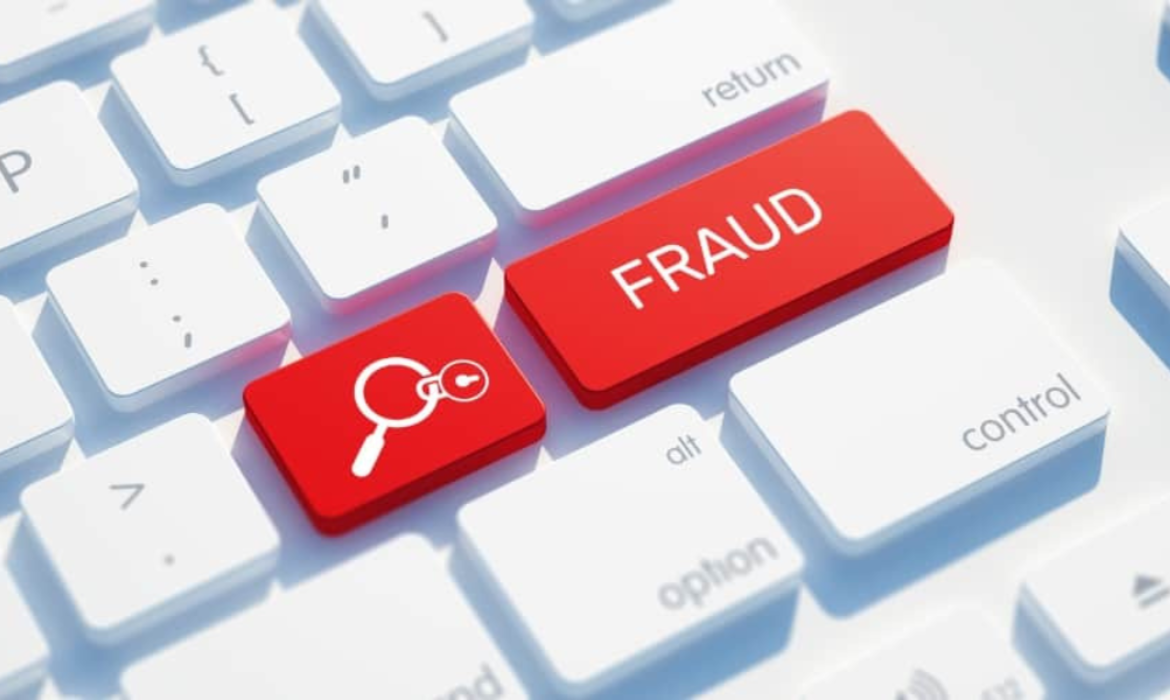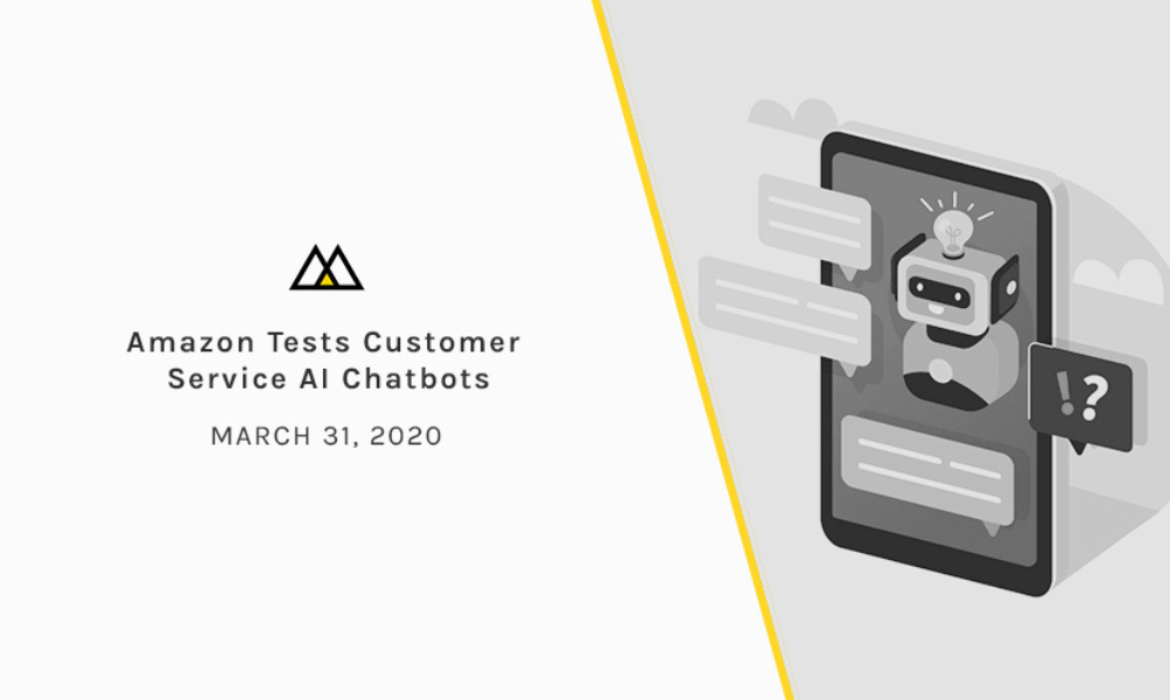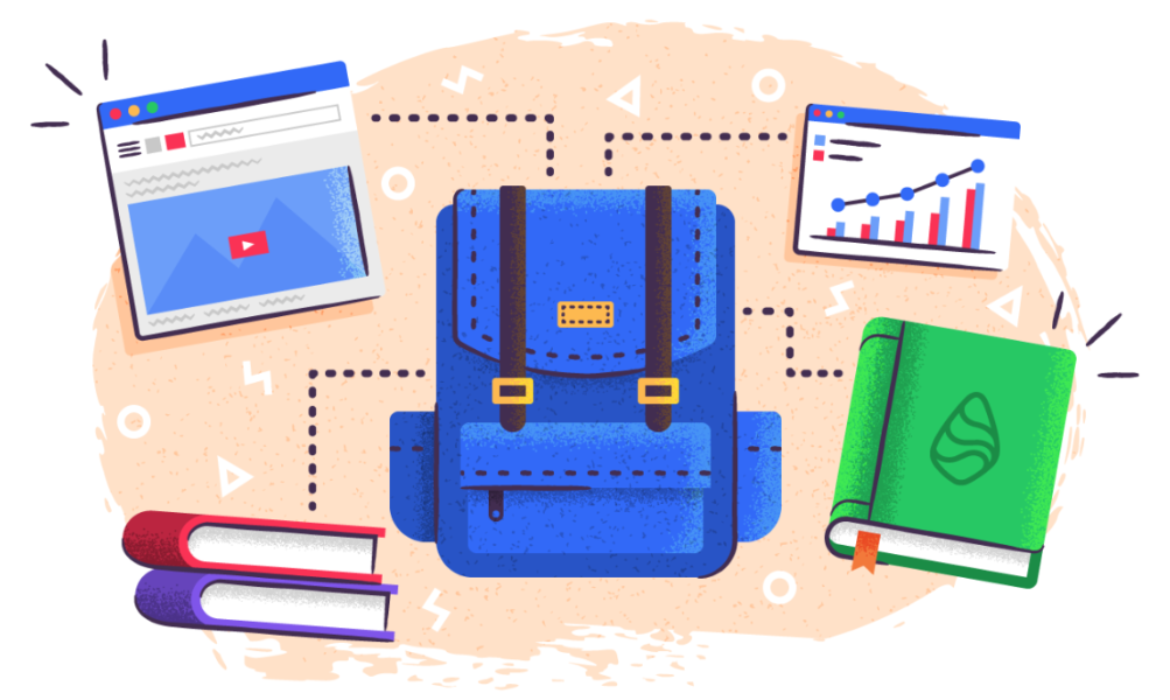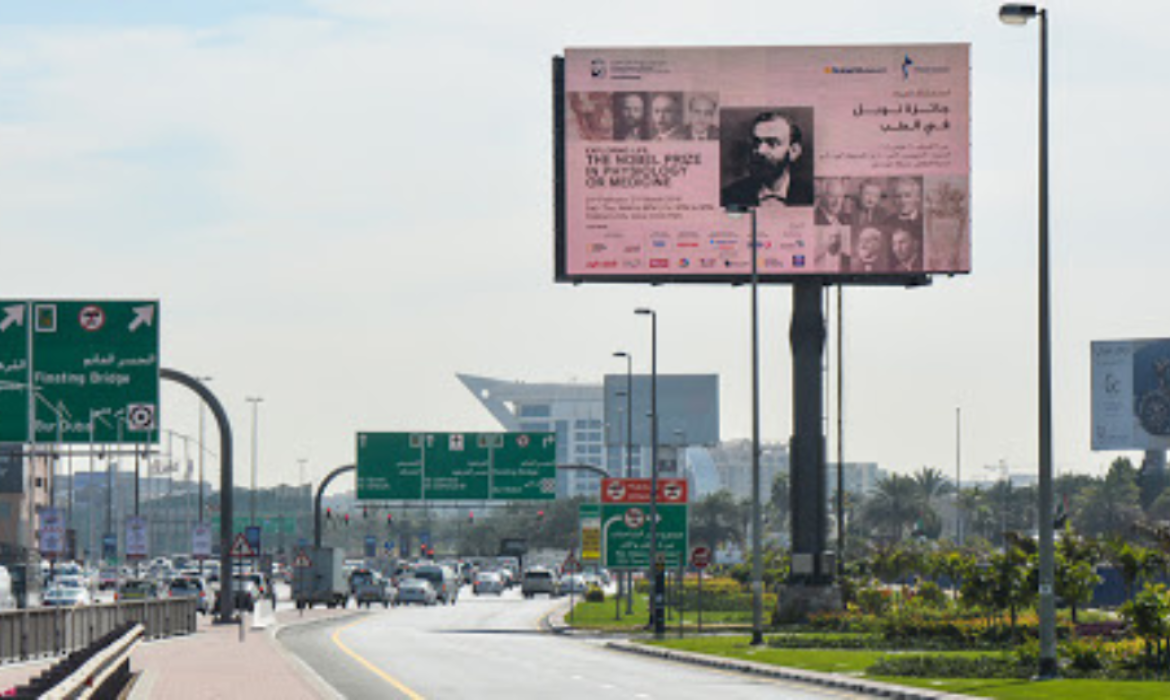From Virtual Concerts to Classes, 9 Brands Respond To Corona Crisis In Their Own Style.
The rapidly spreading coronavirus is disrupting marketers including mandatory work from home, closing offices, cancelling events or tweaking advertisements. However, amidst the coronavirus crisis brands, media entities and others are taking actions to educate and inform the public about the pandemic while the world keeps its social distance.
Scroll through the article to know major actions taken by the brands as coronavirus has sent shockwaves across industries.
Kraft Heinz commits $12 million in money and food.
Kraft Heinz has committed to donating $12 million globally to ensure people across the globe have food in this crisis. The company will give $1.9 million in cash to hunger organization Feeding America in the U.S.A and provide $.4.7 million in products including Kraft Macaroni & Cheese, Heinz Gravy, Planters Nut Mixes, DEVOUR frozen meals to the food banks. They have also launched an internal campaign #WeGotYouAmerica for its U.S plant employees as they ramped up the food production to meet the consumer needs.
In the U.K, the company is partnering with a charity Magic Breakfast to provide 12 million healthy breakfasts to needy school children. In Canada, the company will make donations to the Food Bank of Canada which includes 100,000 boxes of KD/Kraft dinner.
CEO Miguel Patricio said,
“This donation is an immediate and impactful way we can help our neighbors in need around the world and help fill this critical gap.
Varsity Tutors launches Virtual Classes
The edtech company released a free product called Virtual school day for parents and teachers as schools are closed due to the coronavirus pandemic. It offers more than 20 hours of live, online classes in a variety of core subjects for students from kindergarten to 12th grade.
The Chief Marketing Officer Adam Weber said,
“We have 40,000 tutors and hundreds of thousands of students, and the vast majority of our business is done virtually.”
It offers as basic as maths and science to high enrichment courses such as Science of Pandemics and Stock Market Crashes.
Snapchat rolls out mental health tool “Here for You”
Amidst coronavirus spread, Snapchat rolled out mental health tool “Here For You” to help users who might be feeling anxious or stressed over the pandemic.
The company said it has added a coronavirus-specific section to the tool “that will provide Snapchatters from the Ad Council, World Health Organization, the CDC, Crisis Text Line, NHS, and other partners who are creating content on anxiety specifically related to coronavirus.”

Image Credit: The Verge
Free Services by Dish tv and Pop Sugar
Dish network-owned TV streaming services ‘Sling’ is offering a selection of content free to the viewers. This free service ‘Stay in and SLING’ is for the significant number of Americans who are stuck home due to the coronavirus outbreak.
Meanwhile, Popsugar is offering its paid app for free for a foreseeable future that features 5000 fitness classes.
One Medical offers a virtual care
The healthcare provider One Medical offers 24 x 7 virtual care to its members amidst coronavirus tension. It has added Coronavirus related questions to its app “Treat Me Now”. As on March 12, the company stated there is an 82% increase in video visits and 30 % consulted online that reduces the burden on the hospitals.
Hyundai revives Job loss Protection
As coronavirus is increasing rapidly, the economy is sinking. (Read how it is affecting the digital advertising industry)It is giving a challenging time to automobile companies who are facing low demand for big-ticket items like cars. It has revived the recession-era program “Assurance Job Loss Protection” that assures to make up to six months of payments for drivers who lose their job or have purchased between March 14 to April 30.
The CEO of Hyundai Motor North America stated in a press release,
“Bringing back the job loss protection program in this unprecedented time will allow our customers to have one less thing to worry about if something unexpected happens to their employment status.”
Dickey’s Barbeque Pit starts Contactless Delivery
Dickey’s Barbeque Pit launches a contactless delivery option for customers who order through the website or app. The delivery orders will be pre-sealed to avoid any tampering.
The company said,
“Guests who order Dickey’s for delivery can have peace of mind knowing their order has been carefully prepared by a certified Pit Master and sealed prior to delivery.”
Facebook pledges $100 Million for Small Businesses impacted by the coronavirus
In response to the coronavirus outbreak, Facebook has concentrated on fighting the spreading of misinformation by offering free WHO ads and banning false cures. It has pledged to invest $100 million in 30,000 small businesses affected by the pandemic in 30 countries where the employees work and live. The financial assistance will be in the form of cash and ad credit. In a Facebook post, Sheryl Sandberg shared,
“Small businesses are the heartbeat of our communities, and many of the people who run these businesses are heavily affected by the crisis – especially as more and more people sensibly stay home.”
She further added to create a virtual training to support business in this new and unsettling environment through its e-learning platform Blueprint. It will also give a $1000 bonus to all the employees of Facebook.
Evolution of Digital Advertising: Happy 25th Digital Advertising And Many More To Come
“ We have the technology, finally, that for the first time in human history allows people to really maintain rich connections with much large numbers of people.” -Pierre Omidyar
The medium which has genuinely changed the landscape of advertising is the internet. It is the single biggest event in the past two decades that has truly revolutionized the ad viewing experience. Considering the high volumes of digital advertising, it is surprising to see how young it is and far it has come. Let’s understand the exponential growth of the internet advertising market.
At the beginning of 90’s the investment in digital advertising was zero. But over the years it has increased multiple-folds and total ad spending worldwide in 2019 will rise by 17.6% to $333.25 bn.

Image Credit: eMarketer
Even though the journey of digital advertising has been short but quite intense. In the last 25 years, a key factor in the rapid rise of digital advertising is technological innovations. From banner ads to artificial intelligence, digital advertising has made an eventful journey to deliver the right content to the right potential customer at the right time. But how much has it evolved over the years? Let’s take a trip down memory lane and explore the evolution of digital advertising.
The Advent of Digital Advertising
When computers were introduced in the 1970s, it was a simple device to exchange e-mails and digital information. Little was known, that it will have such a huge impact on digital advertising. Many marketing pioneers perceived it as a big business opportunity as the number of connected people grew. Within a few years, we witnessed different types of ads that connected with the audience.
In 1995, the total number of internet users was 16 million worldwide and subsequently reached 558 million in 2002.
- The Banner Era (1994-1996):
The first online advertisement appeared in the year 1994 marking the start of digital advertising. The oldest and first online banner ad by At&T appeared on Hotwired magazine with a run time of three months for a price of $30,000. The ad produced click-through rates of 44%. Following the success of AT&T, online display ads became popular and advertisers were looking for ways to better target ads mostly bases on consumer demographics.
From the early start, advertisers were aware that internet advertising is different from traditional advertising. The businesses began to comprehend that messages through email are cost-effective than traditional advertising. The internet became a playing field and investors enjoyed the novelty factor of it. It was a lucrative business so many entrepreneurs, investors, and advertisers started investing in this money-making machine.
Meanwhile, in 1995, Yahoo was launched and became the primary search engine. In its heyday, it charged up to $30 to $100 to run the banner ads. Back then, advertisers were required to provide the standard 468 x 60px banner ad for online campaigns. (see below)

Image Credit: 1st Webdesigner
In the same year, one of the first ad-serving technologies ‘Double Click’ was launched with an intent to track the performance of the ads and ROI on it. In 1997, Pop-up ads were invented to gain the attention of ad-blind users but soon it became a bane of online advertising that led to pop-up ad blockers.

Image Credit: 1st 1webdesigner
- Channel Era (1999-2000)
This period saw the rise and fall of online advertising.
The web was expanding rapidly and the number of websites was increased day-by-day. The year 1998 saw the birth of the Google search engine– a player to this day dominates the digital advertising industry and revolutionized advertising forever with the launch of its ad system ‘Google Adwords’ in 2000. The main objective of Google Adwords was sponsored search experience that didn’t undermine the quality and relevance of search results through the Google Quality Score model which is still used today.
At the same time, ‘Mobile Advertising’ made its debut.’
Online advertising was at its peak in the late 1990s and investors were investing in millions in dot-com startups. $8.2 billion were invested in online advertising between 1995 and 2000.
In mid-2000, the first-ever code was written for Adblocker which led to the beginning of a battle between publishers and adblocking. In 2002, Google revamped Adwords, introducing the option to advertise using the Pay-Per-Click (PPC) model. The year 2003 and 2004 marked launches of two prominent platforms LinkedIn and Facebook respectively. Exactly, one month after the launch, Facebook delivers its first advertisement in the form of banner ads called ‘Facebook Flyers’.
However, mid-2000 witnessed the biggest downfall as the dotcom bubble bursts. The huge influx of money that created the online advertising bubble began to dry up and the value of internet-based companies was decreasing. The stock market collapsed leading to recession. Many companies’ stock prices fell sharply and others shut down.

Image Credit: 1stwebdesigner
The only company that survived the dotcom bust was Google who took the opportunities that it had to offer in their stride and filled in the space left by the players.
- Social Era (2005-2008)
After the bubble burst, internet advertising saw a decline except for search engine technology. The highly efficient and dependable search engine technology market grew to USD 2.3 billion in 2003.
Meanwhile, in 2005 YouTube- the world’s largest video advertising platform made its debut and in the following year, Google purchases YouTube for $1.65 billion. The social network brought a new form of customer participation. It gives you the freedom to like, share or rate information. YouTube offered companies to promote their product and services on the most valued media platform by consumers ‘Video’ without any big investments.
In 2006, Facebook introduces sponsored links and smaller display ads that concentrate on user demographics and interest. Around the same time, a major advertising platform Twitter was launched with a concept of communication-based in 140 characters and making hashtag a household word. The introduction of the iPhone in 2007 was a major tipping point in mobile advertising. Social networks offer many opportunities to reach potential and existing customers.
- The Native Era (2009-2011)
As the number of companies advertising through the internet increased, advertisers began to look for less conspicuous ways to promote products. Due to this, the use of native advertising gained momentum and was on a rise as a result of higher CTR and engagement.
The year 2010 gave birth to Instagram exclusively for iOS devices. In a matter of time, it became popular marketing and advertising platform which later was purchased by Facebook. In the following year, Snapchat was created and it supported the widespread use of video with augmented-reality enabled filters that have created a stir amongst millennials.
Twitter introduced promoted tweets and paid advertisements to celebrities. Promoted tweets allowed users to reach a larger audience and generate more engagement from the existing and new followers whereas paid advertisement means sponsored tweets. Businesses recruit celebrities to promote their brands and services to their followers. For instance, Charlie Sheen made a record as he became the first person to reach 1 million followers in 25 hours after his account was created. A few days later, he started to sponsor tweets through ad.ly
- The Modern Era (2012- present)
Since 2004, digital advertising has recovered from the downfall and advertisers have accepted the importance of online advertising. Digital advertising is more sophisticated with innovative technologies and branding tools.it more interactive and uses Flash and Java for graphics.
In 2012, the Internet of Things(IoT) came into picture influencing marketing and advertising. In the next few years, there were many interesting developments. Instagram introduced sponsored posts allowing users to run ads by promoting old or new posts. In 2014, Pinterest made its debut with social media advertising growing bigger.
The growing adoption of smartphones hinted advertisers to focus on in-app mobile advertising and leave the mobile web browser. For instance, voice technology ‘Alexa’ allows users to do voice searches. The year 2015 witnessed mobile ad traffic surpass Web traffic- IAB UK reported for the first time mobile overtakes desktop with total spend hitting £4.8bn mark. Video consumption proved to be the strongest area.
Real-Time marketing became a buzzword. In 2016, Pokemon Go became a sensation. A classic example of augmented-reality on mobile devices attracted more than 45 million users. In 2017, two technological development came happened. Firstly, Ad.txts that were introduced by IAB Tech to improve transparency in the programmatic advertising ecosystem. Secondly, Apple announced AR Kit and Google followed with AR core for mobile AR apps and advertising.
The growing use of voice technology, artificial intelligence, and other digital technologies introduces new areas of advertising. A key point to include is an in-depth understanding of consumer behavior and delivering personalized and relevant advertisements.
The European Union’s General Data Protection Regulation (GDPR) was implemented in May imposing restrictions on companies to change the way of collecting data, protecting the privacy and personal information of the users. Even California passed a strict privacy law that changes the data collection method. Conforming to the recent changes, digital advertising Industry plans to replace Cookies with First-Party Data.
Wrapping up
In this phase of digital transformation, the top priority of companies is to provide a personalized end-to-end customer experience in real-time. Millions of advertisers, marketers, companies, or businesses are relying on digital advertising.
After Coronavirus Pandemic, Economic Downturn Awaits Ad Industry
Hello! At first, hope you all are safe, healthy, and isolated in these trying times.
Last week due to the rapid rise of coronavirus, all events and big announcements in the ad tech industry were cancelled and companies shifted to work remotely. However, there is an unexpected sting in the tail – the economy is slipping into recession.
Initially, the advertisers thought the impact of coronavirus would be short but now they are preparing for its effects to stay for months. With the economists warning that a global recession is underway, the global markets witnessed a sharp fall. On the other hand, the investors feared coronavirus would stunt the economic growth resulting in a market crash of 3000 points from the Dow Jones and the value of stocks falling steeply. The advertising executives think the coronavirus pandemic means normal business is on hold indefinitely.
According to a report from research firm eMarketer, a reduction in the growth of advertising is expected on a global scale due to COVID-19. The firm said the global ad spend is expected to be $691.7 billion, down from the earlier estimate of $712 billion. The total ad spending of China, the second-largest ad market is expected to reach $113. 7 billion, down from the previous estimate of $121.13 billion.
Many business events and pitches worth millions of dollars have been postponed until the coronavirus stabilizes. While it is early to predict the overall economic outcome due to coronavirus outbreak, however economists like IAB Europe’s Daniel Knapp warns a situation similar to the 2008 recession. However, that recession was driven by the issues in the financial system, currently, coronavirus is creating the collapse of the consumer demands across sectors weakening the economic activities around the world.
The impact of coronavirus pandemic on advertising has begun to sink in. As quoted by the DigiDay, David Indo, CEO of ID Comms said,
“We are facing unprecedented market conditions and many advertisers have sensibly focused on protecting key business and commercial requirements.”
He further added,
“A significant number of pitch plans are being paused and placed on hold until the situation clarifies. The result could be an avalanche of reviews through the second half of the year or perhaps a delay until the beginning of 2021.”
The biggest impact of the coronavirus pandemic has been a major disruption to supply chains. For instance, Apple witness a shortage of iPhone supply in China. As a result, it established Foxconn as a primary manufacturer. Currently, the production is shut down in China reducing the forecast in iPhone shipments in Q1 by as much as 10% according to Apple analyst Ming-Chi Kuo cited by MacRumors. Some advertisers like Adidas and AB InBev are pulling out dollars from China because of coronavirus overturning the ability to sell ads whereas others with streaming services are wary to take more ads as it might look that they are trying to gain more profit from people forced to stay at home.
Cancelled events and travel restrictions refer to fewer people travelling which means business metrics like return on advertising spend are in freefall for travel companies. According to Gareth Owen, MD of independent agency network TiPi Group, certain verticals like travel are trying to cut down on advertising and their travel clients aren’t bidding on the keywords that usually drive sales as a part of cuts to pay-to-click strategies that have also stopped display budgets.
Speaking to DigiDay, Christian Gladwell, Global CEO, M&C Saatchi Performance expanded on the point,
“The virus is bad news for performance marketing budgets if they are only employed at a low stage of the funnel that’s acquiring the media within a narrow cost per action range.”
The problems of the travel industry and event organizers are becoming a part of the ad industry as well. For example, influencers looking for collaboration on lucrative projects are suspended for two reasons – no travel or event is cancelled. Even though only a few travel and tourism campaigns and brand sponsorships have been cancelled by companies, but if the situation gets worst it can have serious repercussions on the influencer’s income
The outbreak has even halted the shooting of movies and series at various stages of production. This can cause monetary damage to the production houses and channels. Therefore, insurance is a big consideration for them as the outbreak comes under force majeure ‘clauses in the contract and is not covered in any policy. Alternatives, like repurposing old footage or investing in animation, is being considered as neither requires to shoot.
Google Gives A New Look For Attribution Reports in Google Ads
Google this month updated the attribution report in Google Ads. The name is also changed from Search Attribution to Attribution which means reporting is limited to Google ads universe. This new update streamlines the reporting. Google in its blog said,
“ The new experience can help you quickly understand how customers interact with your marketing throughout the purchase cycle, making it easy for you to take action in the areas that are driving results.”
Along with the overview report, attribution reports in Google Ads include top paths, path metrics, assisted conversions, and model comparison.
The revamped overview report helps advertisers to visualize the customers’ path to conversion. You can note the percentage of customer conversions after multiple clicks on your ads. Device analysis shows customer conversion from more than one device.
Charles Huyi, Product Manager, Google Ads in the announcement said,
“Every business is different, so reports cover a range of insights – from the most common sequences of ad interactions leading up to a conversion, to how much credit is assigned to each interaction along the way,”

Image Credit: Google Ads
The model comparison report helps advertisers to compare cost per conversion and return on ad spend for different attribution models such as last click, rule-based and data-driven attribution.
Google Ads offers several attribution models like the last click, first click, linear, time decay, position-based and data-driven.

Image Credit: Google Ads
The streamlined reports make it easy to navigate but you may not find the same things as in the old reports. In order to access attribution reports in Google ads, click on the Tools icon in the upper right, under Measurement, select Attribution.
Digital Advertising v/s Digital Marketing: Know the Difference.
In this digital age, marketing is no more a choice but a prerequisite for businesses who are leaving no stone unturned to get their message across to the customers effectively and powerfully.
Then the question arises, in order to put forward the message in the right way to the right people, which one to go for?
Marketing or Advertising?
Well, aren’t they both the same? The answer is ‘No’.
There is a thin line of difference between them. This article will help you to understand it and justify the answer to the above question.
Know the basics-
Digital Advertising:
It is also called online advertising, web advertising or internet advertising
Digital advertising is defined as a form of marketing or advertising where businesses leverage internet technologies to deliver their promotional advertisements to customers.
In simple words, if you see an ad on the internet, it is called digital advertising.
There are three types of digital advertising:
1. Pay-per-click (PPC) ads: (Adwords search ads, bing ads, etc)
For example, the ads you see in search results.

Image Credit: Wordstream
2. Display ads : (Banners, video, mobile, pop-ups, etc)
For example, this ad by eBay is promoting its products. eBay is the biggest player in banner advertising and invests a lot of money in display advertising.

Image Credit: Bannernack
3. Social ads: (Facebook, Twitter, YouTube, etc)
For example, A ‘suggested post’ on Facebook is a social ad.

Image Credit: Social Media Examiner
Digital Marketing:
Digital Marketing includes all the marketing efforts using the internet or digital technologies. Businesses leverage digital channels like emails, search engines, websites, social media, blog posts, logos, and everything else that is helpful in online promotion and connect with current and prospective customers.
There are six types of digital marketing:
- Search engine optimization (SEO)
- Social Media Marketing (SMM)
- Content Marketing
- Email and Mobile Marketing
- Affiliate Marketing
- Online advertising
The following infographic explains digital marketing in detail:

Image Credit: Smart insights
Now that we know the key processes in each segment, let’s look at the major differences –
-
Digital Advertising is a part of Digital Marketing
Digital Marketing is a broader term whereas digital advertising is a part of it. This raises a question,
Is digital advertising necessary for your business?
Not really. Your business can survive without digital advertising.
Why and How?
The definitions make it clear that digital advertising is a subset of digital marketing. When you start with a business idea, from that very moment you are involved in marketing and not advertising.
Product creation, Product Pricing, Packaging, Promotion, market segmentation, target audience are all a part of your business strategy and marketing mix.

Image Credit: BBC UK
Digital advertising is part of the marketing mix. It comes into play when you use the internet to promote your product or service or to generate traffic. However, you can also choose from other tactics – a search engine, content management, social media, email marketing, etc to generate traffic.
It is not necessary to use digital advertising at the promotion stage to reach your target audience.
For instance, DemandBase in one of the campaigns used white papers, infographics, Slideshare, and webinars to generate new leads. This helped the company to generate over $1 million in new revenue through content marketing resulting in 1700 new leads and connect with 125 webinar viewers.
You can run your business without digital advertising but not digital marketing. The purpose of all marketing techniques is to generate leads and generate traffic and so you can choose any tactic – SEO or PPC or both whichever helps to grow your business.
-
Digital Advertising is an activity while digital marketing is a process:
Digital marketing helps to build a strategy to market your business in the following way:
- Define your target audience,
- Ways to attract, engage, convert and retain the customers,
- Evaluate existing and new digital channels like SEO, PPC, content marketing, etc
- Analysis and monitoring
In broader terms, digital marketing is a process that runs your entire business on the internet and it begins from the moment you start with the business idea.

Image Credit: Abhiseo
The digital marketing process is continuous. It begins with the research phase and continues until the refining stage and the data from the refining stage is used again for the research to develop a new marketing strategy. It is a perpetual and never-ending process.
Digital advertising is an activity in the digital marketing process. It fits at Step 6: Promote- the purpose is to promote your primary digital identities (blog, website, app, product or anything else) via ads to relevant people in order to generate traffic. To do this, a digital advertiser will need inputs from a digital marketer on what to promote, who to promote, advertising budget, etc. An advertiser will accordingly create an ad to generate traffic.
-
Digital advertising is tactics while digital marketing is strategic
A strategy is a long term and complex plan which involves decision-making at various levels while a tactic is a short-term plan or means to achieve the desired result.
Digital advertising is tactical in nature as the promotion of a particular product or an offer to the target audience is momentary and short term. Subsequently, it can be easily replicated by competitors.
For instance, Facebook ads are short-lived. You might run an ad on Facebook to promote your product or an offer during Easter. Once you achieve the goal from the campaign, you will discontinue it and move on with another ad campaign or platform.
Whereas, digital marketing is strategic in nature that involves long term planning, projections, defined goals and objectives, budgets and resources to achieve the objectives.
For instance, Slack is a collaboration tool that allows teams to share files and communicate easily. They had an amazing rise at the launch with 15000 users in 2014 to over 500,000 in less than a year, and currently holds nearly one and a half millions of which are paid accounts.
Their strategy was clear from day one – focusing on the customer experience. They believe in selling solutions and not products. The company acknowledges to 8000 help desk tickets and up to 10,000 tweets every month.
This is what digital marketing plan does versus a digital advertising campaign that shows results instantly.
A digital ad campaign if fails will not impact the business overall but if digital marketing campaign fails it will affect the running of the business immensely.
-
Digital advertising promotes the brand while digital marketing develops the brand image.
Digital Advertising promotes a brand, product or services. A compelling ad engages the customers, generates leads and creates brand awareness.
For instance, Typeform, a survey software company offers a freemium option with a condition that customers should include a thank-you page that includes its logo and message. It is a win-win situation that helps customers get to know the product for free and the brand gets free advertising.

Image Credit: ThinkIt Training Institute
Digital marketing builds a brand and brand image with a strategy in place. You plan the logo, design, taglines for your brand. You will develop a strategy on how your brand will be perceived by the target audience and what message your brand will convey to the target audience. It is a long term planning to build a robust brand image based on values and ethics that remain etched in the minds of the consumers.
-
Digital Advertising is sales centred while digital marketing is audience psychology centred.
Digital marketing is not always sales-driven. The ultimate goal is to increase your ROI and sales but along with building a relationship with the target audience.
Let’s say you write a blog and publish it not only to increase traffic and revenue but build a relationship with your readers. This is what digital marketing does, it is based on audience psychology. To understand your target audience, their needs, and wants, it is essential to know audience psychology.
On the contrary, digital advertising focuses on a specific segment of the target audience that can be reached via ads. For instance, if you pay $50 for a $5 CPM slot, you are content as long as you get your 5000 impressions. In digital advertising, you are not much concerned about who sees it as long as the ad is performing and reaches out to the people.
Conclusion-
After reading this article, you may now have a clear idea about digital marketing and digital advertising. They are not the same and has an individual role to play. Let’s have a short recap to have no doubts in mind.
| Digital Marketing | Digital Advertising | |
| If you see any form of marketing online, it is digital marketing. | If you see an ad on the internet, it is called digital advertising. | |
| There are six types of digital marketing:
i) Search engine optimization (SEO) ii)) Social Media Marketing (SMM) iii) Content Marketing iv) Email and Mobile Marketing v) Affiliate Marketing vi) Online advertising |
There are three types of digital advertising:
i) Pay-per-click (PPC) ads ii) Display ads iii) Social ads |
|
| Digital Marketing is a broader term and it starts from the moment you share a business idea. The marketing mix comes into place. | Digital Advertising is a subset of Digital Marketing. It is one part of the marketing mix. | |
| Digital marketing is a process. | Digital Advertising is an activity in the process. | |
| Digital marketing is strategic in nature.it involves long term plans and decision-making. | Digital Advertising is tactical in nature. Tactics involve a short-term plan and means to achieve the desired goals. | |
| Digital Marketing builds brand and brand image. A well-defined plan and strategy help to build a brand from a long term point of view. | Digital Advertising creates brand awareness. It generates traffic and promotes a brand or a little push to sales. | |
| Digital Marketing has a large number of tools and techniques to get their business to customers like blogs, videos, whitepaper, infographic, content management, website and more | Digital Advertising is a tool in the Digital marketing toolbox. | |
| Digital Marketing is based on audience psychology. It understands the target audience and creates a buyer persona. | Digital Advertising is more sales-driven and focuses on a particular segment of the target audience that can be reached through ads. |
IAS Issues Threat Alert Regarding The Latest Digital Ad fraud Scheme
The industry’s key weapon against ad fraud has been compromised, allowing fraudsters to pilfer media spend. Ad. txt files were ideally launched three years ago by the IAB’s Tech Lab to help the ad industry combat ad fraud but instead has become a conduit for it.
It is an initiative to improve transparency in programmatic advertising. The tool was introduced by IAB for publishers and distributors to list all companies that are authorized to sell ads. Essentially, it will also show when an advertiser buys ads directly from the publishers or authorized ad tech vendors and also highlight those sites that do not use an ads.txt file.
However, in reality, since the ad.txt tool launched, fraudsters have exploited the opportunity where the buyers do not check the lists with bots that generate fake browser data and create fabricated URLs in order to steal advertiser’s media spend. 404bot is the perfect example of this type of fraud.
This botnet involves a practice called domain spoofing, where the fraudster impersonates the publisher’s webpage. However, the 404bot holds no inventory. Domain spoofing allows slipping nonexisting URL into approved domain lists. To avoid any detection, the fake URL is a combination of two existing URLs.

Image Credit: Campaign India
Now spoof domains are receiving ad calls, the challenge is to deceive the audience to ‘ watch’ the video ads. For this, 404 takes advantage of a Bunitu Trojan. The Trojan infects internet users with malware that allows fraudsters to connect to their devices. Once connected, the fraudster can use the infected ID to generate ad calls that appear from legitimate sources. The whole process of buying ads from the seller and inventory appears to be legitimate while there is nothing in reality.
Integral Ad Science(IAS) has uncovered the bot scheme that has affected many high and low publishers which have one thing in common: large ads txt list and has stolen at least US$15 million of advertiser’s money- a number that continues to grow.
The fraud scheme is similar to 3ve and Hyphbot, the main signature of the 404bot is extensive domain-spoofing, where URL is fabricated at browser level which means the data from the browsers is fake. 404bot has been building networks gradually over the years ensuring that they are not easily detectable to the human eye.
Botnet’s Origin:
The IAS Threat Lab first spotted a rise in domain spoofing activity in 2018. Evgeny Shmelkov, head of the IAS Threat Lab said,
“We detect bots and protect our customers from their effects every day. The 404bot has been active since 2018 and its unchecked growth now warrants industry action.”
In September 2018, the botnet activity increased and remained high till the start of November 2018, when it abruptly dropped. However, around the same time another botnet, 3ve was taken down by cybersecurity and ad verification firm White Ops. IAS assumed both events were related, but the timing of 3ve takedown didn’t match with the drop in activity of the botnet it was monitoring. After 5 months of low activity, 404bot traffic increased again in mid-April, 2019 and then dropped in September 2019.

Image Credit: Campaign India
In its white paper, IAS explains,
“We can only hypothesise the true reason for this subsequent drop in activity of the botnet, but based on/ previous observation, we know that 404bot activity could spike again at any time.”
Conservative estimates suggest that 404bot’s activity between April 2019 to September 2019 affected over 600 million ads. It has affected over 1.5 billion video ads across the U.K, the U.S.A, Canada, and Australia. Assuming video ads price in a single-digit dollar, an average individual fraudster makes at least $15 million a year.
Drawbacks of Ads.Text files
The 404bot capitalizes on unaudited ads.text files and its vulnerabilities. Meanwhile, ads.txt files continue to be longer and become an easier place for fraudsters to hide. The longer the ads.txt list, the harder to audit for unauthorized sellers. According to IAS, the only link between all publishers that were impersonated by the bot was that they all had long lists of ad tech vendors in their ad.txts files. Evgeny Shmelkov said,
“This discovery left us wondering if publishers were not properly vetting resellers, or if they were simply using Ads.txt on their websites as a formality. The former, if true, defeats the core purpose of Ads.txt’s existence.”
“We are learning from this bot that it is crucial to continuously audit and update Ads.txt files.”
The IAS threat lab detects bots regularly and to reduce unnecessary panic, it refrains to divulge details from every discovery. However, due to no sign of 404bot shutting down, IAS is sharing details to help other players in the ad-tech ecosystem to clean up the inventory. They are closely working with publishers and IAB Tech Lab to improve the ads.txt model to limit frauds like 404bot.
Meanwhile, Dan Larden, managing partner of product and partnerships at programmatic agency Infectious Media said, companies buying and selling media aren’t set up properly to audit any trade. He further added,
“Programmatic advertisers need to be pushing ad tech vendors for more log-level data so that they can see where the wastage is on the media that’s being bought.”
Amazon Tests Customer Service Chat bots With Original Dialogue Capability
Amazon takes one more step towards its mission of being ‘Earth’s most customer-centric company’ by working on commercial service customer chatbot to generate original dialogue in real-time using recent major developments in AI language.
The retail giant said that most text-based online customer service system includes automated agents that can handle simple requests. Generally, these agents are governed by rules – flow charts that have specific answers to particular customer input. If any other request that does not follow under the flowchart, the automated agent transfers the request to the human customer service representative. So, now the company is rolling out a separate consumer-facing chatbot that uses neural networks than rules to match human-authored response template to customer requests.
This project marks one of the first tests in the customer service market with modern and new natural language processing technology that researchers believe has the power to boost the progress in this field. This model has leading-edge systems like OpenAI’s GPT-2 that draws on massive training datasets and predictive texts to generate realistic dialogues.
Most chatbots in the market today despite technological advancements in machine learning still run on automation than AI. While Microsoft’s DialoGPT has used a new language for a generative chatbot before, they are yet to see a commercial application.
Jared Kramer, an applied-science manager on Amazon’s Customer Service Tech team wrote in a blog post,
“It is difficult to determine what types of conversational models other customer service systems are running, but we are unaware of any announced deployments of end-to-end, neural-network-based dialogue models like ours”
According to the research paper, Amazon is hoping to safeguard its generative model for a chatbot with Response-ranking AI. In this scenario, a generative AI will list down possible responses to customer requests and a neural network will select the most pertinent response. Each model is trained on approximately 5 million conversation-response pairs from around 350,000 past interactions related to specific customer service issues.
Presently, random trails consist of two types of customer service issues: return refund status and order cancellations. An internal metric is used to measure the success of the new AI chatbots. According to the metric, the new AI chatbots have significantly outperformed the old ones that account for the successful completion of the transaction and whether customers have to follow up within 24 hours.
Creating Stunning Visuals That Also Deliver Results Is A Science. Today, We Decode It.
Good advertising is not always about selling a product but creating a long-lasting impact and that is precisely what visual adverts do. An attention-grabbing image has been proven to increase engagement and performance.
The world is now more visual than ever before.
The old adage ‘Picture speaks a thousand words’ is certainly true in this digital era. Check out the key findings below to comprehend the power of Visuals.

Image Credit: Mdg Advertising
However, visual creative advertising can fail if the various elements like the subject, color, lighting, focus, the text are not optimized. There is a reason why visuals are more compelling than text. It taps into the ‘consumer psychology’ and influences their buying behavior. This psychological effect can be created through colors, repetition, or call-to-action.
1. Color: There is a science behind how emotions react to various colors. When you create your visuals, you just don’t put colors but use them to create an emotional response. When your brain sees an image, it subconsciously decides whether the content is important or not. This is the impact of colors on the mood and where colors and creative advertising merge together.
The psychological effect of colors is used in branding and designing ads.
- Branding: Brands have always called on colors while creating their own identities. According to the infographic by Kissmetrics.com reveals color influences 85% of a customer purchasing decision. Some brands opt for bright and bold colors while some go for subtle colors pointing the emotions the product brings out. Brands like Google or Microsoft have multicolor accentuating that their product embraces any emotion anytime.

Image Credit: Blueberry labs
- Ads: While designing an ad knowing your target audience is essential to build the correct color scheme. For example, men and women have different color preferences. If your product is feminine and targeted for girls/ women then pink is the color to highlight.

Image Credit: Kissmetrics
 Image Credit: Blueberry Labs
Image Credit: Blueberry Labs
2. Call-to-action is heard and attended
Naturally, CTA is an important element in your visual creative advertising. For example, a company found a 245% increase in leads after optimizing the landing pages. Make sure to keep your ad copy crisp with minimum textual content. Let your visuals do all the talking.
Ensure visuals take the center stage, followed by text to guide the users to take the next step and focus on optimizing it. You should end up with something like this:

Image Credit: Bannersnack
As you can see, the ad features the product image and call-to-action is in front and center to get attention immediately.
3. Repetition:
The trick of repetition works to build memories and equally, is an essential element of visual creative advertising. Repeated elements create easy brand recall but build variations to avoid fatigue.

Image Visme.co
4. Ownership of the Visual creatives:
Whenever someone looks at your ad and say, “Oh! I think to have seen this before”. This moment you lose the ownership of the ad. It is common to use images from the internet for ads but doesn’t help and loses its unique appeal.
Here, ownership comes into the picture and additionally helps to make brand memorable. For instance, when you look at BuzzSumo ad, there is the same character in all their visuals. Easily, you recognize the brand seeing the character. Three things in one creative: Repetition, Recognition, and Ownership.

Image Credit: Buzzsumo
Choosing the right images is the key in Creative Advertising
While preparing for an advertising campaign, the right choice of images is vital. People are visual by nature. With shorter attention spans, images express ample of information with a quick glance and subsequently highly effective.
The target audience is drawn to images that are attention-seeking and compelling. The popularity of Instagram says it all. The image-sharing platform has 1 billion monthly active users and it is a fact that businesses are using it to run their ad campaigns. Do not undermine the power of images!
But, how effective is it to have a great image? To answer this, here are the Instagram statistics and insights of businesses using IG for their creative digital advertising.
- ⅓ of the most viewed stories are from businesses – Instagram started with IG business Profiles to help businesses to grow and advertise. An estimated 71% of US business uses IG.
- Photos with faces get 38% more likes: Adding faces to your image increases the scope of positive response, so include people in your campaigns.
- Instagram generates 4x more interactions compared to Facebook: IG engagement rate is on the rise and has increased by 29% between October 2017 and May 2018. With increased engagement, advertisers are spending more on Instagram.
- 83% of users discover new products and services on Instagram: This implies that apart from being a discovery engine for brands, it has a strong impact on people’s shopping journey.
- 65% of the most prominent posts feature product: The target audience wants to see the product and know what it has to offer.
- Photos posts drive more engagement than video: The engagement rate of the image is more than videos,1.03 %. Videos attract more comments and images draw likes.
Examples of Visual in Creative Advertising Campaigns
- Powerful Images
Lemon and Line: The accessory maker has chosen the right image with the right color palette and the whole ad is compelling. Red, Blue and yellow are the right mix of primary colors, creating a high contrast but maintaining a strong balance. The highlighting point is the product is seen on the model’s wrist still it is a part of the whole image and not the focus.

Image Credit: Ad Expresso
- Visual Metaphor
It can be created by looking for the element to mimic the actual situation. Simple but out of the box concept to attract eyeballs and deliver a strong message.

Image Credit: Visme .Co
In this ad, the message is loud and clear whereas the human helmet becomes the visual metaphor. The elements like color, font, lightning can be tweaked.
- Video Advertising
Volvo Trucks: Videos supports explaining big messages in a few frames. Technically, you simplify the idea compared to an image or GIF. in this ad, Jean-Claude Van Damme performs a split. With this ad, Volvo trucks try to demonstrate the sturdiness and stability of the truck’s steering. Youtube responded that when an ad is successful, people search it online on Google and not when it pops out before any video.
This is what every ad should aim for creative space to visit again.
In Closing
Good design can help you to widen your reach and grow. Effective visual adverts are a combination of many elements like color, images, text, lightning or platforms.
Focus and optimize the visual creatives for a positive impact. When advertising visually, ensure to use your own images as far as possible. Use attention-grabbing images to boost engagement.
7 Tips That Saves A Fortune On Your Pay Per Click Budget
On average, Google Ads advertisers receive $2 revenue on every $1 spent. This means an advertiser can expect to make double the money invested on this platform but there is no guarantee. It is compelling but intimidating as well.
Essentially, it is gambling. It is looking for your investment to pay off than making zero dollar profit. It is common to believe that you need higher investment for higher returns.
But the truth is:
You don’t need a big budget to generate sales. A low budget PPC campaign will also lead to effective results. Here is how you can do it.
7 Tips to get optimize your PPC campaign
1. Optimize Ad Copy to Increase CTR
One of the best ways to save money on Google Adwords is by writing a better ad copy. A poor ad copy will not bring you desired returns while a better ad copy will appeal to your audience, increase your click-through rate (CTR), and Quality Score. The quality of ad text is a major contributor to build your Quality score. The quality score has a direct link to the success of your PPC campaign and therefore, it makes sense to invest time to optimize your ad copy.
2. Set your daily maximum budget
Before starting with the campaign creation and actual investment, project your result in advance to keep realistic goals.
A low budget is not a cash cow but a relative term.
For instance, enter your maximum of the low-budget spend for a single day. If you can spend $150 per month, which implies $5 per day.

Image Credit: AdEspresso
The next step is to comprehend the common data-based averages to get an idea about the cost per click and whether it aligns with your budget.

Image Credit: AdEspresso
In Q1 of 2018, the average CPC’s were $2.76 and CTR was 4.23% on Google ads
3. Use Ad Extensions
The second money-saving tip is to use ad extensions that improve your CTR. It allows the audience to take direct action from the searches whether you want them to call your business, download your app, know your offers, locate you on maps, or visit your webpage. Extensions make your ad more competitive and encourage users to know more about your business.

Image Credit: Neil Patel
4.Geolocation:
The most overlooked but critical feature in AdWords. For example, a dentist in Boston doesn’t want the ad to appear in searches of dentists in Los Angeles.
In the campaign settings, advertisers can easily target a specific country, state, DMA, city, and even zip code. Radius targeting is also possible around specific addresses to get even more granular.

Image Credit: Wordstream
Geolocation settings are also important for businesses selling goods and services from a physical location to set optimal working hours of their operations.
5. Try out single keywords to target:
When you are on low budget campaigns on PPC, you cannot bid on multiple keywords to get results. It will narrow the spread of the result, need longer set up, unique landing pages raising your time, effort and cost. If you have a budget of $5 a day, it is futile to bid on ten keywords costing that amount for a single click.
Use a ‘single, specific, good’ keyword. You shouldn’t be targeting head terms like helicopter skiing. Someone searching ‘Helicopter skiing’ has no idea what they want – they will click on your PPC ad, browse and then leave.
The keynote is to be as specific as possible with the keyword. The more specific is your keyword or long-tail keywords, cheaper is the cost and better is the click-through rates and in return the quality score.
To calculate the effectiveness of your keyword bidding strategy, try this
Keyword searches x CTR = Estimated traffic
So what kind of keyword you should find?
Use the keyword research tool to unlock all keyword possibilities including new keyword niches and less common keywords that have the potential to drive traffic and conversions.
This tool gives you valuable data like bidding estimates for top bids and top spot bids considering the competition.

Image Credit: AdEspresso
For instance, Look for a medium volume with less competition keyword and search the results that match the intent. (Intent means what the searcher expects to achieve with the search.)
The search is “Best CRM” which means the searcher is looking for the rankings of CRM’s and not the CRM product that is claiming to be the best.

Image Credit: Ad Espresso
6. Call-only campaigns:
Call only ads are ideal for advertisers trying to generate phone calls from their PPC campaigns. Some businesses with smaller budgets have challenges with landing pages. Visitors might abandon their shopping cart or download or anything if directed to a landing page at any stage of the conversion process with the risk that they may not complete the activity. Therefore, call-only campaigns enable users to call you directly by clicking on the ad. Furthermore, the finest part of these ads is that they appear only on those mobile devices that are capable of making calls. Hence, you will not squander money on unsuitable devices.
Don’t miss the opportunity on prospective customers by directing to landing pages which may never complete.

Image Credit: Wordstream
7.Ad Scheduling
Ad Scheduling is essential to control your budget, especially if funds are tight. Similar to geolocation settings, dayparting or ad scheduling help you maximize your business visibility at a certain time when your customers are online.

Image Credit: Wordstream
For instance, if your store is open between 8.am to 5.00 p.m, Monday to Friday, set your ads to display during the working hours to drive the traffic. However, if you sell online, you are always open then you can set your ads when the customer traffic is at peak to avoid any negative ROI.
Ad scheduling in collaboration with geolocation, you can exercise strong control over where and when your ads are to be shown to the users while being careful not to hamper your efforts with excess control.
Final Words
It is not the budget that determines the success of your PPC campaigns but strategy. Google Ad words have many features to offer and you can gain impressive results on a tight budget.
It is sensible to start small and expand your reach with a limited budget once you comprehend which strategy works best for you. Spend time in your PPC account to identify the problematic areas and correct them. This will save you from any financial damage and give insight on the outcome of your strategy.
Relevant keywords, well-designed PPC strategy, and a good understanding of your target audience can aid the potential of your campaign even with a tight budget.
BackLite Media Launches Measurement Platform Utilising ‘Big Data’ in the UAE.
BackLite Media, a specialist out-of-home (OOH) outdoor advertising company has partnered with IQ Data to launch BackLite Intelligence, the MENA region’s highly innovative OOH advertising platform to utilize ‘‘big data’ on a local scale.
The finest technology, deployed across BackLite’s whole OOH network, will add exemplary value to advertisers across Dubai and Abu Dhabi with an avant-garde audience measurement data, centered around behavioral data linked to the millions of people who see BackLite’s signs daily.
With the new system ‘BackLite Intelligence’, advertisers will get an advantage to understand who is viewing their content clearly, giving them the insight to find better ways to target the right demographics. It will help in measuring people whereabouts and show the advertisers and brands the right consumer profile to target for their future campaigns.
BackLite Intelligence will leverage over 1.2 billion mobile phone location signals per month within UAE, and map them across their outdoor network, to give advertisers tailored, detailed and inclusive data relating to each campaign. The data includes the viewership of each location by the day and night, key shopping behavior and in-depth demographic information.
Aligned with the smart city vision of the UAE’s leadership, the new technology adopted by BackLite Intelligence will rightly integrate with the outdoor advertising which at present BackLite Media is installing at Sheikh Zayed Road, creating a smooth, fulfilling and enriched advertising experience for all.
The privacy of the audience is safe, while the new system is useful to the advertisers. No personal information like emails or contact number is passed to BackLite Intelligence or its partners. The information collected is GDPR compliant and data collected via a software development kit (SDK) which collects location signals that are installed across many apps.
Bill Fordyce, CEO of BackLite Media, said,
“As the premier OOH media company in the UAE, we are committed to improving accountability and transparency and addressing long-held concerns on audience measurement. The launch of BackLite Intelligence with our partner IQ Data represents a significant milestone for the advertising industry in the region and underscores our commitment to providing the best-in-class technology and solutions to drive the greatest value for our advertisers. By linking this technology with our new digital signs on Sheikh Zayed Road, due to be installed ahead of Expo 2020, we believe the solutions provided by BackLite Intelligence will be a game-changer for our clients, enabling them to gather deeper insights that provide increased clarity for sales and marketing strategies and hard data to fuel better business decision-making.”
Dimitri Metaxas, Co-Founder & CEO of IQ data, said,
“Our partnership with BackLite marks the MENA region’s first-ever Out-of-Home (OOH) advertising measurement platform to utilize Big Data at scale. To ensure its ongoing success, we’ve leveraged over 1.2 billion mobile location signals generated per month within the UAE and mapped them across the entire BackLite OOH network in order to bring new levels of audience measurement and transparency into their products offering. We are excited to be working with an industry leader in BackLite who not only share our enthusiasm for innovation but also a commitment to improve OOH accountability to regional advertisers.”

